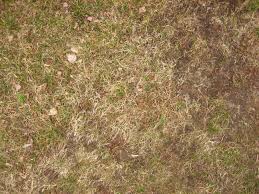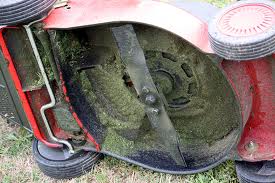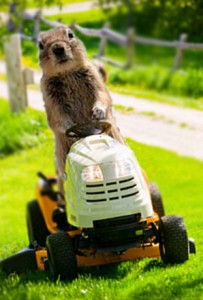Lawns are essentially plants, which means they need regular maintenance to look their best. An ignored lawn may be okay, but it’s highly unlikely. Instead, focusing on it — and focusing on it the right way — means you’re lawn can be happy, healthy and pretty. In this article, Mower Source takes a look at different ways of mowing your lawn to achieve a variety of looks.
The Wrigley Field Cut
What lawn is nicer to look at than a baseball field, and especially the one at Wrigley Field? While the overall ballpark has a lot of positive aesthetics going for it, its lawn is one of the biggest components. It’s comprised of mainly alternating stripes, but there’s also a faint cross hatch pattern on it, too.

.
How to get the look: Straight lines are a must (alternate the direction on each stripe), but to get the striped look, you have to bend the grass blades in different directions. To do that, leave your grass on the long-ish side and weigh your lawn mower down with duct-taped barbells (to adequately bend the grass). The only tricky bit is maximizing on how much sun can reflect off the grass blades: the direction that gets the most sun on your lawn should be parallel to the sun. For example, if your lawn gets the west sun, mow stripes in east and west lines.
Spiral
Want to make your lawn look like a small crop circle? It’s a lot easier than you think. You do have to make a concerted effort to focus on straight lines (making them curved is a lot harder), but using landmarks in your yard helps a great deal. Tip: use a weed whacker on the outer edges before you begin, so that way you can get cleaner lines.
How to get the look: Start in the middle of your lawn and move in outward concentric lines. Or, in less fancier terms, mow up one lawn mower width, turn, and repeat until you’ve done the whole lawn. Only turn in one direction.

.
Quadruple Spiral
If you’re looking for a big challenge but something that’ll make your lawn look really cool, give four spirals a go. It can get a bit tricky keeping track of all the turns (62) and straight lines, but outlining it faintly in chalk first can cut out a lot of that.
How to get the look: Start on one edge and go from the middle spot. From there, you’ll be cutting into the first center of one spiral, mowing your way out of it and into the center of another spiral, and so on until you’ve done all four.

.
Zig Zag Spiral
This is an identical pattern to the Spiral, except there are zig zags mown into every line. The result — if done correctly — is a lawn that looks like a completed jigsaw puzzle, with each puzzle piece the same shape and size.
How to get this look: Start in a corner (as opposed to the exact center as with the normal spiral), and turn your lawn mower 90 degrees every lawn mower width. Go from corner to corner in reverse concentric lines until you’ve reached the center.
Labyrinth
This looks like a tricky pattern to achieve, but that’s more illusion than actuality. If you don’t have a good eye for going at it with your lawn mower, outline the pattern first with chalk and then follow the lines.
How to get the look: You’ll want to start in one corner, mow down the edge, stop halfway and then begin the labyrinth. It can be a little dizzying to complete, but the finished look is so worth it.

.
You’re set with a number of different patterns you can mow your lawn with, so the only thing left is making sure you’ve got the right lawn mower. Check out Mower Source’s selection of lawn mowers to settle on the one that’s right for you, and enjoy free shipping to the lower 48 states.


















